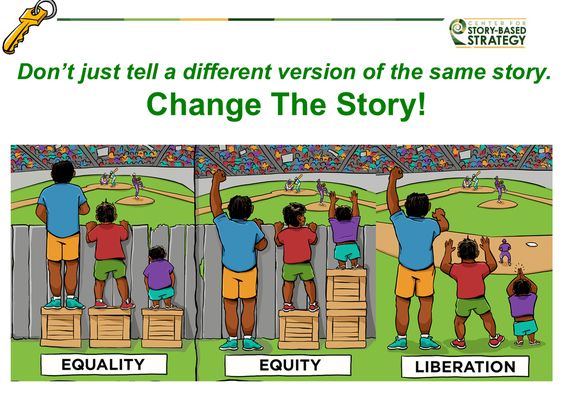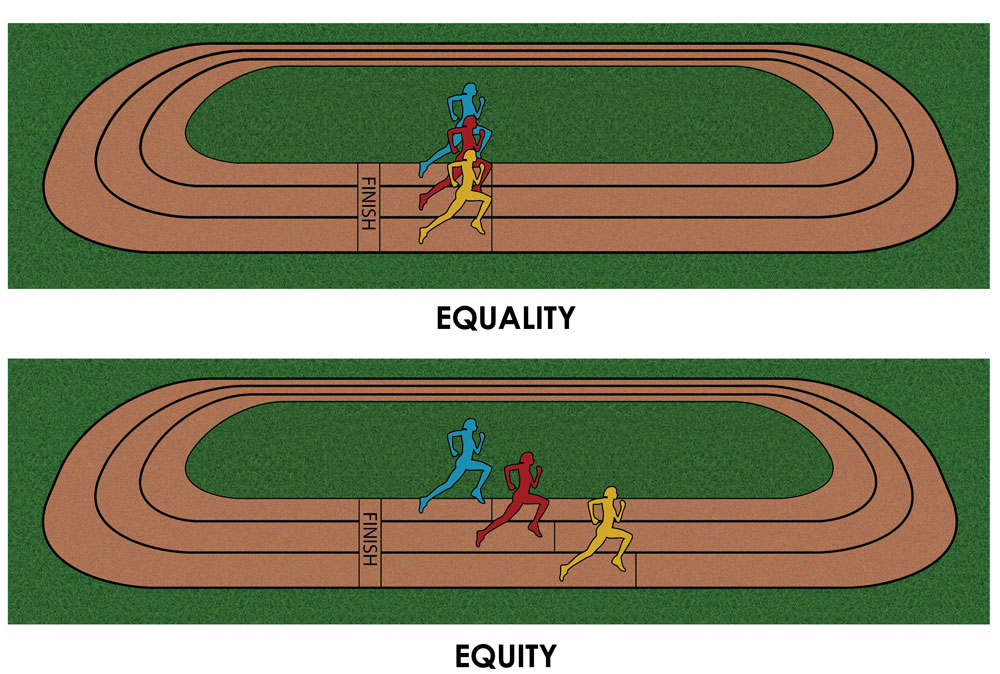This page is a list of resources that can be used for learning about Race, etc. For now we are simply accumulating references here we think are very useful for folks who want resources for learning. Later we could add some structure, like a curriculum outline. If you are interested in a resource for a particular topic about Race, please email us on the Contact page with a request. We will respond and hopefully be able to get you some references.
- Peggy McIntosh's article: Unpacking the Invisible Knapsack, is the beginning of the use of the phrase "White Privilege". It was published in 1988 and is still one of the very best places for white folks to begin their personal work.
http://www.collegeart.org/pdf/diversity/white-privilege-and-male-privilege.pdf
2. Verna Myers: Overcoming Implicit Bias https://www.ted.com/talks/verna_myers_how_to_overcome_our_biases_walk_boldly_toward_them
3. Mellody Hobson: Color Brave not Colorblind https://www.ted.com/talks/mellody_hobson_color_blind_or_color_brave
4. Brene Brown: Vulnerability
https://www.ted.com/talks/brene_brown_on_vulnerability
5. Equality vs. Equity


6. Claude Steele’s book: “Whistling Vivaldi: How Stereotypes Affect Us”
7. Robin DiAngelo's article on White Fragility:
8. Dr Dena Samuels' book: "The Culturally Inclusive Educator: Preparing for a Multicultural World"
“At last—an empathetic and inspiring book that says the way to educate all students more successfully is to awaken teachers’ higher awareness. Dena Samuels suggests a paradigm shift in which teachers, having seen the practices of exclusion that have been programmed into them, develop more inclusive awareness and learn to respect, hear, and ally with the growth and development of all students, including themselves.”
—Peggy McIntosh, founder and senior associate, National SEED Project on Inclusive Curriculum
9. Dr Dena Samuels' one page brief on Colorblindness:
Here it is as a PDF: Unpacking __Colorblindness__handout (best formatting)
And here below is the content of the PDF:
Unpacking “Colorblindness”*/Post-Racialism
Developed by Dena R. Samuels, PhD
www.denasamuels.com
* Note: The term “colorblindness” has been used in the academy for over a century to mean
freedom from racial bias. More recently, it has been argued that it is an ableist term, not to be
confused with the medical condition of the same name. It is used here in conjunction with the
term “post-racial” for the purpose of unpacking both the word and the concept.
Following the Civil War when Jim Crow segregation was established, white supremacy
was overtly racist maintaining clear economic, political and social lines based on race.
Race mattered and white dominated, and this was public knowledge.
Whiteness began its change from white supremacy to what we now refer to as
“colorblindness” during the Civil Rights period. The change came following Rev. Dr.
Martin Luther King, Jr.’s famous “I Have a Dream” speech, in which he stated, “I have a
dream that my four little children will one day live in a nation where they will not be
judged by the color of their skin, but by the content of their character.”
Blatant racism in the post-Civil Rights era became socially undesirable, and Dr. King’s
words were often mythologized as expressing the notion that we live in a post-racial
society where color and race no longer matter. The social structure and racial hierarchy in
the U.S., however, did not change. White supremacist ideology continues to remain intact,
perpetuating racial inequality. Today, people of color continue to be killed, deported, and
discredited, based on their race. At the same time, “colorblindness” or “post-racial”
sentiments also remain. This allows white people to maintain their privileged status in
society while at the same time pretending that race/color is irrelevant, and that we as a
society have gotten beyond the idea of race. It is typically from a well-meaning and wellintentioned
white person to a person of color that we hear the words, “I don’t see your
race.” The consequence, however, is it not only denies the recipient’s existence and
experience, but allows the one who offers these words, to deny their own white privilege.
Those who adhere to colorblindness/post-racialism want racism to go away. But getting
rid of the idea of race will not eliminate racism. In fact, it is a form of aversive racism.
Colorblindness or post-racialism is characterized by the following features:
• Denies that race makes a difference in people’s lives.
o Based on the overt and covert racism that still exists, race certainly impacts
people’s lives: both those who are systematically advantaged by it (whites) and
those who are systematically disadvantaged by it (people of color).
• Assumes people are either racist or non-racist.
o When we think of a racist, we are taught to think of a member of the white
supremacist movement (White Power, KKK, etc.). This image reinforces the idea
that anyone else can’t possibly be racist in any way, or even have racist thoughts.
• Sees whiteness as the standard to which all other racial/ethnic groups must aspire.
o Colorblindness/post-racialism believes we all will, and should, assimilate into
the “mainstream,” or in other words, whiteness.
• Supposes that we are only individuals, and ignores that we are also part of a system of
social inequalities that affects all of our lives.
o Culture supports stereotypes and social hierarchies. Through exposure to
cultural ideologies, including an adherence to the notion of colorblindness/
post-racialism, we are socialized to maintain those inequalities. Only by
challenging cultural stereotypes and inequalities at both the individual and
systemic levels, can we overcome those inequalities
• Claims that to notice and/or mention race must be racist, and therefore, taboo.
o People do, in fact, see race; we have just been taught not to discuss it.
Pretending we “don’t see race” is dishonest, discounts the impact race has on
our lives, and studies show it is not an effective strategy to combat racism.
• Considers intent, not impact, as important.
o Due to lack of discussion of race (it’s a taboo, as previously mentioned), many
people don’t realize the subtle negative messages their language (both verbal
and non-verbal) and behavior might impose on other people. Stating that race
doesn’t matter is often heard as, “I don’t want to take responsibility for any of
the racial inequalities I might be perpetuating.” Though well-intentioned, the
impact of colorblindness/post-racialism can leave scars that are difficult to heal.
• Color is beautiful and colorblindness can’t see it.
o Colorblindness/post-racialism can serve to disconnect one person from another; it
can sever relationships as it continues to discount and discredit lived experiences.
Many whites are deeply afraid of dealing with race for fear of appearing racist. Colorblindness/
post-racialism serves to deny race as a factor that still advantages whites at the expense of
people of color. With colorblindness as a prevailing notion, white still dominates.
An Intersectional Approach:
Seeing the ways in which colorblindness/post-racialism challenges equality, and
disconnects us from others, in what ways might ignoring other forms of oppression (based
on gender, sexual orientation, etc.) produce the same result?
References:
- Anderson, K. J. (2010). Benign bigotry: The psychology of subtle prejudice. New York:
Cambridge University Press.
- Bonilla-Silva, E. (2009). Racism without racists: Color-blind racism and the persistence of
racial inequality in America. (2nd ed.). Rowman and Littlefield.
- Ferber, A. L. (2007). Whiteness studies and the erasure of gender. Sociology Compass, 1(1),
265-282.
- Gallagher, C. (2009). Color-blinded America or how the media and politics have made
racism and racial inequality yesterday’s social problem. In A. Ferber, C. M. Jiménez, A.
O’Reilly Herrera, & D. R. Samuels (Eds.), The matrix reader: Examining the dynamics of
oppression and privilege (pp. 548-551). New York: McGraw-Hill.
- Hitchcock, J. (2002). Lifting the white veil: An exploration of white American culture in a
multiracial context. Crandall, Dostie & Douglass Books.
- Sue, D. W. (2010). Microaggresions in everyday life: Race, gender, and sexual orientation. Wiley.
- and work by M. Duncan Rinehart, Ph.D. 2004
